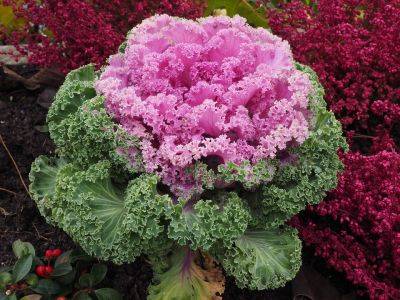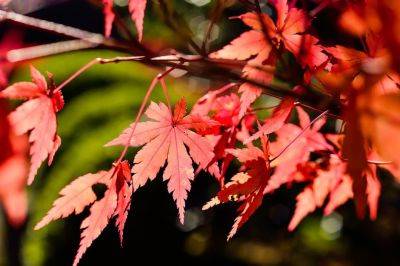Possibly from the Latin barba, a beard, many species have a hairy or downy look (Scrophulariaceae). Mullein. A genus of 300 species of hardy herbaceous plants, mostly biennials or short-lived perennials, from temperate parts of Europe and Asia.
How to grow Cacti and Succulents
18.01.2024 - 06:23 / backyardgardener.com / Frederick Leeth
Succulent plants are the camels of the vegetable world, storing up food and water to be used not on a rainy day, but during a period of prolonged drought. This may last for a few weeks or, in extreme cases, plants have survived without rainfall for over a year. This water can be stored in either the leaves or the stems of the plants, depending on the type.
This gives rise to two distinct types of succulent plant, leaf succulents and stem succulents. The stem succulents usually have no leaves (except sometimes very small ones on young growth, soon falling off), and the green tissue of the stems takes over the work of the leaves to manufacture the food. Without leaves, the plants can reduce much of the water loss. The stems are usually very thick and full of water storage tissue, and are mostly either cylindrical or spherical in shape, sometimes being deeply ribbed. The ribs enable the plant to expand or contract as it absorbs or loses water.
Leaf succulents have plump, rounded leaves full of water storage tissue. They are often coated with wax, meal or hairs, helping to reduce water loss from their surfaces. Often these succulents have fleshy stems as well, but the leaves play the most important part in food manufacture.
The cacti, all belonging to one family, are the most popular group of succulent plants, but many other plant families have succulent members. Among the families whose succulent species are grown are the Crassulaceae, Aizoaceae, Euphorbiaceae, Asclepiadaceae, Liliaceae, and Agavaceae.
The cactus family is native to America; plants found in Europe and elsewhere have been introduced at some time in the past. There are three distinct types of plant, the pereskias, the epiphytes and the desert cacti, and these

Growing Guide for Bergenia Plant
Named for Karl August von Bergen, 1704-60, German botanist (Saxifragaceae). These hardy perennial herbaceous plants with large evergreen leaves were at one time called megasea, and were at another time included with the saxifrages. The flowers which come in early spring are showy in white, pink or red-purple, borne in large heads on long stems. The large leathery, glossy leaves are also decorative, especially as in some kinds the foliage is suffused with reddish color in winter.

Growing Guide for Pyrethrum – Chrysanthemum
From the Greek pyr, fire, probably with reference to fever, since the plant was used medicinally to assuage fever (Compositae). These hardy plants are admirable for a sunny border and last well as cut flowers. Long known as pyrethrum they are botanically classified under Chrysanthemum.

Growing Guide for Ornamental Brassica
The students have returned to school, your mailbox is crammed with a new crop of seed catalogs, the leaves are falling, and the days are getting shorter. Drive by your local garden center or roadside stand and the displays are filled with ornamental kales and cabbages. Autumn has arrived.

Growing Guide for Helianthemum
From the Greek helios, the sun, and anthemon. a flower (Cistaceae). Sun Rose. A genus of evergreen and semi-evergreen shrubs, sub-shrubs, perennial plants and annuals, very free flowering. Numerous named varieties and hybrids are grown and four species are native plants.

Growing Guide for Helenium
After Helen of Troy ; according to legend the flowers sprang from her tears (Compositae). Sneezeweed. Hardy herbaceous perennials from North America, good for cutting and popularly grown for their late summer flowers. The disc of the flower head is very prominent, a characteristic of the entire genus.

Growing Guide for Maurandia
Tender climbing perennial plants which are free flowering and suitable for growing in pots in the greenhouse, or for planting out of doors. They are closely related to the Snapdragon (Antirrhinum), to whose family, Scrophulariaceae, they belong.

Biggest Pumpkin Growing Books
We were fortunate to win at Half Moon Bay, California this year. The competition was intense with 80 entries, 10 of which were over 1,000 pounds. The weigh-off is always on Columbus Day. The winner stays until the following weekend to participate in the HMB Pumpkin Festival.

Growing Guide for Hepatica
Today I went out my back door and noticed that one of my rosebushes was, unexpectedly, sporting a fresh new flower bud. It was within a day or so of opening up–small, greenish and obviously defiant of the season. The bud was an oddity on a rosebush that is itself an oddity. When I bought the small white-flowered shrub last summer it had one blossom that was half white and half red, and looked as if it had been half-dipped in red paint. Though my February bud was not a “half and half” flower, I took its appearance as a harbinger of spring, plucked it, and delivered it to a friend who shares my belief in such things.

Growing Guide for Echinops – Perennial Plant
From the Greek echinos, a hedgehog, opsis, like, referring to the spiky appearance of the flower heads which resemble a rolled-up hedgehog (Compositae).

Growing Guide for Turnip Rutabaga
Garden rutabaga, such as ‘Bronze Top’ and ‘Purple Top Improved’ often replace winter turnips. Rutabaga are hardy, and the large roots may be left in the ground until Christmas at least. You can also lift the roots in October, cut off the foliage and store the swedes indoors in dry sand.

Grow Japanese Red Maple Trees from Seed
Japanese Maple seeds have a very hard outer coating as do many ornamental plants. Under natural conditions, the seeds would have to be on the ground for almost two years before they would germinate. All that happens the first winter is the moisture softens the hard outer shell, and the second winter germination begins to take place. For all of this to happen in the proper sequence so the seedlings sprout at a time of the year when freezing temperatures or hot summer sun doesn’t kill them, takes a tremendous amount of luck. You can improve the odds by controlling some of these conditions, and shorten the cycle.
